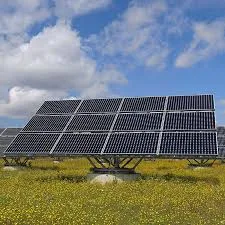Understanding Different Categories of Solar Inverters for Your Energy Needs
Types of Solar Inverters A Comprehensive Guide
Solar energy is becoming an increasingly popular choice for both residential and commercial energy solutions. Central to the functionality of solar power systems are solar inverters, which are crucial for converting the direct current (DC) generated by solar panels into alternating current (AC), suitable for powering homes and businesses. Choosing the appropriate type of solar inverter is essential for maximizing energy efficiency and system performance. This article will explore the various types of solar inverters and their unique advantages.
1. String Inverters
String inverters are the most commonly used solar inverters, particularly in residential systems. These inverters connect multiple solar panels (or strings) to a single inverter. They function by converting the combined DC output from the panels into AC. One of the key benefits of string inverters is their simplicity and cost-effectiveness. They require minimal maintenance and are easy to install. However, their performance can be significantly impacted by shading, orientation, or other environmental factors affecting individual panels. If one panel underperforms because of shading or dirt, the entire string's energy output can drop, leading to less efficiency overall.
2. Microinverters
Microinverters operate at a different level compared to string inverters. Instead of using a single inverter for multiple panels, microinverters are installed on each individual solar panel. This means that each panel’s output is optimized independently, allowing for better performance, especially in conditions where there's partial shading or varying angles of orientation. Microinverters can enhance the overall energy yield of a solar system, making them an attractive option for installations with complex roof designs. Although microinverters tend to be more expensive upfront, their benefits often justify the investment in the long run due to increased energy production.
3
. Power Optimizerstypes of solar inverter

Power optimizers are a hybrid solution that combines features of both string inverters and microinverters. These devices are installed at each solar panel, optimizing the energy output similar to microinverters while still channeling the DC power to a central string inverter for conversion to AC. Power optimizers help mitigate issues related to shading and performance differences among panels, ensuring a more balanced energy output. This technology typically offers a more affordable option than microinverters while still providing significant benefits in terms of energy efficiency and maximized production.
4. Central Inverters
Central inverters are primarily used in large-scale solar power plants. They function similarly to string inverters but are designed to manage power from many arrays of solar panels (often hundreds or thousands) connected to one large inverter. Central inverters are capable of handling high power outputs and are typically more efficient than string inverters at scale. However, they are not practical for smaller systems due to their size and complexity. Maintenance can also be more challenging, and failure of the central inverter can lead to significant downtimes in energy production.
5. Hybrid Inverters
Hybrid inverters are versatile devices that can handle both solar energy and battery storage systems. They allow for storing excess solar energy generated during peak sunlight hours in batteries for later use. This capability is becoming increasingly essential as more homeowners and businesses seek energy independence and back-up power solutions. Hybrid inverters can also efficiently manage the flow of energy between the solar panels, battery, household loads, and grid.
Conclusion
Selecting the right type of solar inverter is a crucial decision that impacts the effectiveness and efficiency of a solar energy system. Whether you opt for string inverters, microinverters, power optimizers, central inverters, or hybrid inverters, each type offers distinct advantages suitable for different solar installations. Evaluating your specific energy needs, installation environment, and budget will help in determining the most appropriate inverter type for your solar power system. By making an informed choice, you can maximize solar energy production and contribute to a more sustainable energy future.
-
String Solar Inverter: The High-Efficiency Solution for Smart Solar EnergyNewsJul.14,2025
-
Revolutionizing Rooftop Energy with the Power of the Micro Solar InverterNewsJul.14,2025
-
Power Independence with Smart Off Grid Solar Inverter SolutionsNewsJul.14,2025
-
On Grid Solar Inverter: Powering the Future with Smart Grid IntegrationNewsJul.14,2025
-
Monocrystalline Solar Panels: High-Efficiency Power for the Future of Clean EnergyNewsJul.14,2025
-
Bifacial Solar Panel: A Smarter Investment for Next-Generation Energy SystemsNewsJul.14,2025







